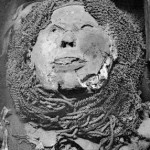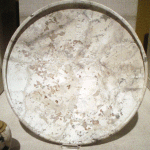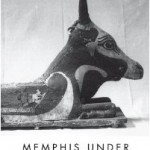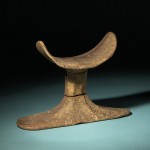Edition - July, 2014

Queen Duathathor-Henuttawy (21st Dynasty), Wife of King Pinedjem I
By Kate Phizackerley. Published on Egyptological, In Brief. June 16th 2014 I have a fascination with the queens of ancient Egypt. If the popular literature is to be believed, only Hatshepsut and Cleopatra were of any particular interest, with other queens relegated to mere adjuncts to their husbands or fathers. I have previously written about […] [more…]

Merneith – The First Queen of Egypt?
Merneith: The First Queen of Egypt? With considerable attention lavished upon the Eighteenth Dynasty, popular TV documentaries, and with a much-visited Mortuary Temple at Deir el-Bahri, many people are aware that the female ruler Hatshepsut reigned as “King” and Pharaoh during the New Kingdom. Many people also know that Queen Cleopatra (Cleopatra VII Philopator) ruled […] [more…]
Edition - December, 2012
Egyptians – The Inventors of Modern Mathematics?
Published in Egyptological In Brief, November 2012. By Kate Phizackerley Those who know me will be unsurprised that when I reveal I have been intending to write something about Egyptian mathematics for some time. Barbara O’Neill kindly sent me a link to an open learning section on the Open University website, drawing on material prepared […] [more…]
Edition - November, 2012
Review of Tutankhamun and the Golden Age of the Pharoahs: A Souvenir Book
Published in Egyptological, In Brief, November 14th 2012. By Kate Phizackerley There is an official companion book to the exhibition and this souvenir book, a small format volume of 64 pages. At 15.5cm by 15.2cm (about 6”) it is oddly not quite square. It is easily available for one penny (or one cent) second hand […] [more…]

The Pyramids of Zawiyet el-Aryan
By Kate Phizackerley. Published in Egyptological Magazine, Articles on August 14th 2012 The Pyramids of Zawiyet el-Aryan Together with the mask of King Tutankhamun, the Sphinx and pyramids are probably the most readily recognised of ancient images, with countless images published of the Giza pyramids. Rock cut tombs were designed to be covert, but pyramids […] [more…]
Edition - May, 2012

Editorial – Journal Edition 4 / Magazine Edition 6
Once again we are publishing in both the Egyptological Journal and the Egyptological Magazine. As usual the Journal contains a small number of academic articles. Etienne Vande Walle, a former President of the Brussel’s Court of Instance has contributed a number of previous articles combining his deep knowledge of legal systems with considerable personal research […] [more…]

Review: Memphis Under the Pharaohs (Dorothy L Thompson)
I was looking forward to reading the second edition of Memphis Under the Ptolemies by Dorothy Thompson. There is an allure, almost a mystique, to Memphis. I wanted to say I enjoyed the book. Sadly I cannot. It became something of a chore, but one rewarded by a great chapter later in the book. An unexpected treasure. Many other reviewers have considered the book in the context of its standing as an academic work. Most students and scholars are likely to have access to the book through their faculty library. In approaching my own review I have therefore considered it more from the viewpoint of enthusiastic amateurs or distance learning students who do not have access to a specialist library. [more…]

Was Egypt the First Nation State?
By Kate Phizackerley and Michelle Low. Published on Egyptological, Magazine Articles, Edition 6, May 31st 2012 Editorial (Kate Phizackerley) Was Pharaonic Egypt a nation state? This is not a new question but it is hard to answer for a variety of reasons, including: the context of the question is rooted in a modern concept (nation-state); […] [more…]
Edition - April, 2012

Editorial: Egyptological Magazine Edition 5
We aim to bring you a new edition of the Magazine every two or three months but Edition 5 is published less than 6 weeks after Edition 4 as Egyptological goes from strength to strength. Headlining this edition, experienced writer Barbara O’Neill demonstrates a new talent as a journalist. Her interview of Dr Joyce Tyldesley […] [more…]

The Birth Bower and Mamissi-Chapels in Ancient Egypt
Kate Phizackerley introduces womens’ experience of child birth in Ancient Egypt and the special birth bowers assigned to this important event. She traces how this involved into a special type of chapel, called a mammis and considers what implications might be drawn from one scene depicting Akhenaten and his queen, Nefertiti. Along the way she covers who might attend a birth and touches on some of the medical texts. [more…]
 By
By